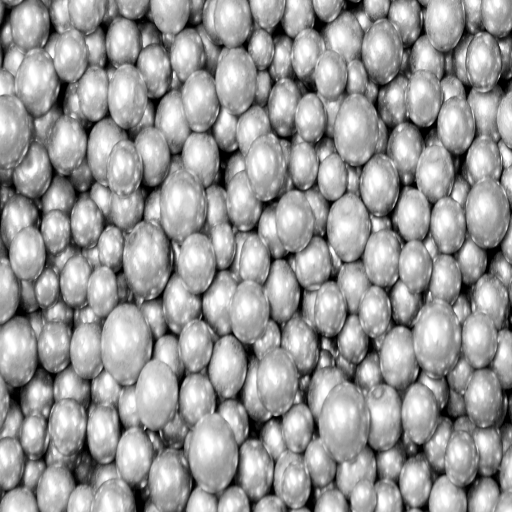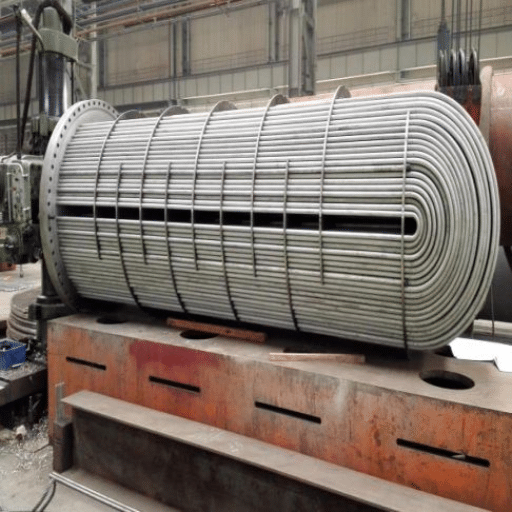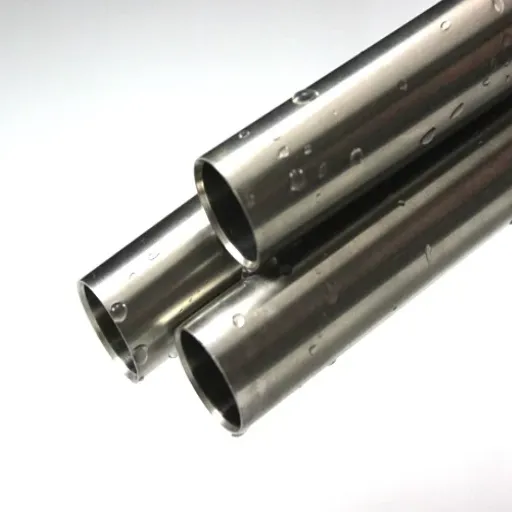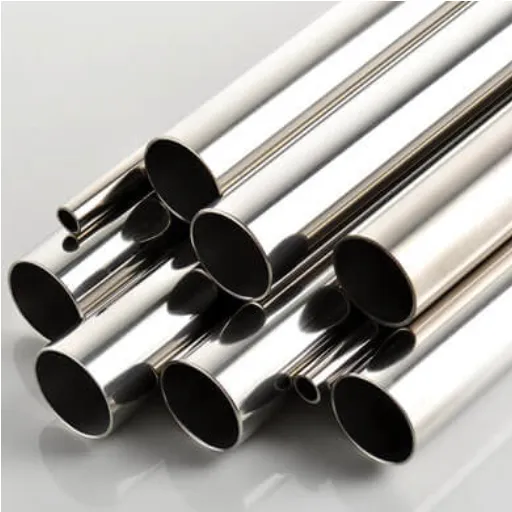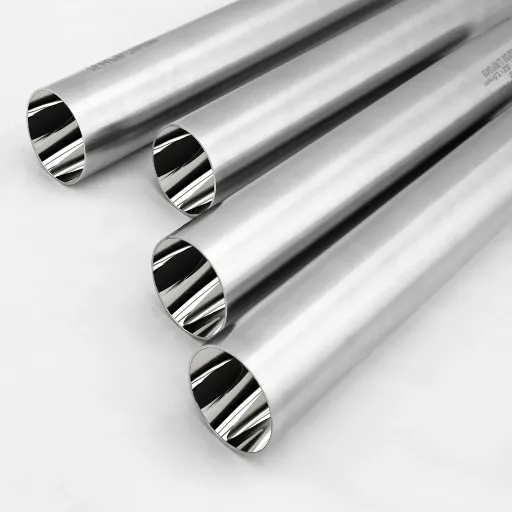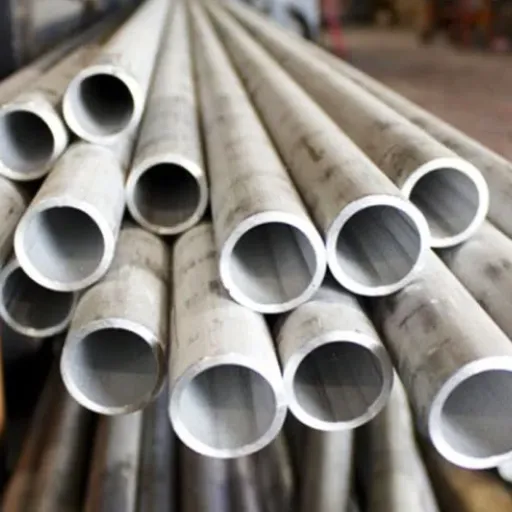Stainless steel has long been recognized for its versatility, durability, and resistance to corrosion, making it a critical material in a wide range of industrial applications. Among the numerous grades available, CD4MCU stands out as a specialized alloy designed for demanding environments where strength, reliability, and exceptional performance are non-negotiable. This article explores the unique properties, precise chemical composition, and practical applications of CD4MCU stainless steel. Whether you are an engineer, materials scientist, or industry professional, this guide aims to provide a comprehensive understanding of why CD4MCU is a preferred choice in sectors ranging from chemical processing to water treatment. Keep reading to uncover how this extraordinary material meets the challenges of modern engineering and manufacturing.
Understanding CD4MCU Steel
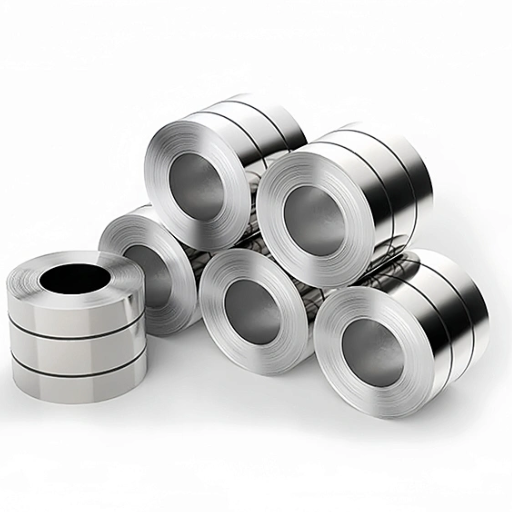
What is CD4MCU Steel?
CD4MCU stainless steel is a duplex alloy known for offering high corrosion resistance, superb mechanical strength, and excellent performance in aggressive environments. It is deliberately forged to bring under one umbrella the advantages of both the austenitic and ferritic stainless steels, thereby providing better durability with a lower tendency for stress corrosion cracking. This combination of features makes CD4MCU an all-around material that wears well under demanding conditions, such as harsh salinity, acidic environments, or abrasive media.
The chemical composition of CD4MCU is varied to suit specific needs. It will usually contain chromium, molybdenum, and copper to achieve corrosion resistance, mostly against pitting and crevice corrosion. In contrast, elements such as nickel and carbon are maintained at a precise level to confer a high duplex nature and best strength and toughness to the alloy. These properties render it highly capable of standing against both static as well as dynamic loads that making it a perfect material choice for applications subjected to mechanical stresses and chemical reactions.
CD4MCU stainless steel finds its way into a plethora of industries, including chemical processing, oil and gas, water treatment, and marine engineering. It is highly desirable for making valves, pumps, and impellers that need to combat aggressive media with high chloride concentration or acidic conditions. Also, it is cost-effective, coupled with a long operational life, which, given little maintenance, makes it an attractive material for projects building towards reliability and lifecycle performance.
Composition of CD4MCU Steel
Considered duplex stainless steels, CD4MCU steel must have dual protective layers in austenitic and ferritic microstructures to enhance its general performance. CD4MCU, in its primary sense, contains iron, chromium, nickel, molybdenum, and copper, depending on its composition. Chromium is generally regarded as a major component and is present from about 24-27%; the chromium component gives a higher degree of corrosion resistance against oxidizing agents. Nickel is present in amounts between 4 and 8 percent; mainly, nickel imparts toughness and durability. Molybdenum present between 2 and 4 percent, further imparts resistance to pitting and crevice corrosion, thus making this material apt for the worst environments. Copper has a presence of around 3 percent, mainly resisting reducing environments like sulfuric or phosphoric acid.
One of the defining features of CD4MCU steel is its balance of mechanical strength and corrosion resistance. The duplex microstructure, supported by the material’s alloying elements, mitigates the risks of stress corrosion cracking, ensuring high performance under mechanical and thermal stress. This makes it an excellent choice for applications requiring both structural integrity and chemical resistance, such as in highly concentrated chloride and acidic environments.
Manufacturing or sometimes usage requirements may demand minor variations in composition, but the unique blend of alloying elements with the CD4MCU steels is closely regulated to provide the same performance across different industrial fields. This guarantees that CD4MCU remains a versatile and dependable option for engineering problems where corrosion and resilience have to be addressed under severe conditions.
Mechanical Properties of CD4MCU
CD4MCU stainless steel is cherished for its excellent balance between mechanical strength and corrosion resistance, standing as the preferred material in hostile and high-stress situations. Its tensile strength usually varies within the range of 100 to 130 ksi (690-900 MPa), depending on heat treatment and specific application requirements. Such a high tensile strength capacity enables the material to sustain high stress without a permanent strain or failure.
The material also offers good toughness and ductility well even at lower temperatures, with the latter being of significance for areas under dynamic or impact loading. The material’s elongation at fracture normally ranges from 15 to 25 percent, indicating excellent flexibility and resistance to brittle failure. Its hardness lies within the range of almost 220-280 HB, meaning its resistance to wear and surface deformation under mechanical contact stands at a very good level.
Another principal property of CD4MCU is its yield strength, generally above 65 ksi (450 MPa). It denotes that the alloy can bear heavy service loads without any plastic deformation. This, combined with the natural resistance to chloride stress corrosion cracking and excellent behavior in tough conditions, makes CD4MCU very apt for important parts in the chemical process, marine engineering, and water treatment system industries.
Properties of CD4MCU Stainless Steel
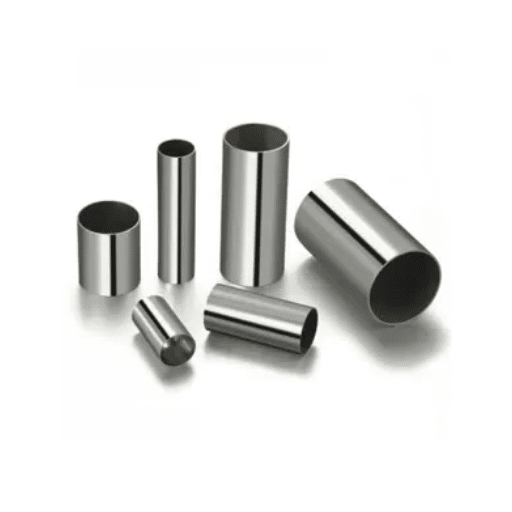
Corrosion Resistance
CD4MCU stainless steel offers outstanding corrosion resistance imparted by the duplex microstructure and balanced chemical composition involving chromium, nickel, and molybdenum. This unique combination of elements highly resists uniform corrosion occurring in acidic and chloride-containing media. As high as 24-27 percent chromium keeps a stable passive oxide layer on top, which hinders any attack on its surface, and thus, it resists corrosive agents over an extended period. To add to corrosion resistance, molybdenum enhances resistance against pitting and crevice corrosion, especially under aggressive chloride conditions.
In this ability to resist chloride stress corrosion cracking, a quite common cause for the failure of most stainless steels exposed to high temperatures in the presence of chloride, lies one of the main reasons for CD4MCU’s uniqueness. The duplex microstructure with its well-balanced mixture of ferrite and austenite phases aids in minimizing SCC susceptibility with the help of less localized accumulation of stresses at the grain boundaries. Such a feature deems CD4MCU highly favorable in marine engineering, desalination schemes, and chemical processing equipment, where it is of utmost significance that operational safety and longevity are compromised due to chloride-induced degradation.
The performance of CD4MCU remains eminent in oxidizing and reducing environments encountered in numerous industrial processes. It resists intergranular attack and tolerates several very aggressive chemicals, such as those who drink strong sulfuric acid solutions and caustics. This flexibility extends to industries such as pulp and paper manufacturing, wastewater treatment, and oil and gas processing. Testing and proven data continue to vouch for the integrity of CD4MCU, even under harsh conditions, making it the material of preference in rigorous service environments.
Thermal Properties
CD4MCU stainless steel’s thermal properties are a requirement for it to find widespread use in environments wherein temperature variations and thermal stresses are of concern. CD4MCU has a very low coefficient of thermal expansion compared with many conventional steels, so any dimensional changes caused by temperature variations are minimal, and this could be a great asset in situations where tight tolerances must be maintained even through periods of thermal cycling. The thermal conductivity of the material advantages heat to be dissipated so that localized overheating and thermal fatigue are avoided in operating conditions at high temperature.
CD4MCU stainless steel retains an engineering structure almost intact over a wide range of operating temperatures, typically cryogenic to those exceeding 800°F (about 426°C). The metallurgical design of the material is evident from keeping mechanical strength at high temperatures with resistance to creep deformation. These properties make CD4MCU suitable for critical components of heat exchangers, high-pressure vessels, and chemical processing units where thermal reliability is of importance.
Another important physical property that must be factored in is the specific heat capacity of the material that reinforces the thermal stability. CD4MCU has quite a high specific heat, thus it can absorb and dissipate heat energy very well without changing its temperature very fast. This, combined with corrosion resistance, makes it last longer in boiler systems and thermal reactors. Joining together these thermal properties with proven chemical resistance makes CD4MCU an obvious choice in industries requiring a sturdy and reliable material that can withstand severe thermal and environmental conditions.
Abrasive Applications of CD4MCU
The CD4MCU has a high efficacy level for those industrial applications subjected to abrasive conditions due to its high mechanical strength, outstanding wear resistance, and strong corrosion resistance. Therefore, it can be reliably used even in adverse environments where materials face physical abrasion and chemical attack. There are five major abrasive industrial applications where CD4MCU offers good wear resistance and durability:
- Slurry Pump Components: CD4MCU is extensively used in the manufacture of slurry pump impellers and casings because it can withstand erosion by high-velocity solid particles present in industrial slurries. CD4MCU components can handle prolonged exposure to abrasive slurries with the least possible wear in mining and mineral processing systems.
- Sand and Gravel Processing Equipment: This material is key to machinery for processing sand and gravel, where sharp and coarse particles constantly put the equipment to the test. It assures long-term durability and reduces downtime of equipment and machinery in these abrasive operational scenarios.
- Hydrocyclones: CD4MCU finds great application in hydrocyclone liners, especially for separating high-density particulates from a liquid agent. It would be hard to choose any other material as a liner under high levels of hardness, extreme pressure, and abrasive slurry flow conditions.
- Volute Liners in Chemical Plants: Volute liners in chemical plant pumping systems, fabricated from CD4MCU, counteract the wear prevailing in corrosive and abrasive slurries. Studies have indicated that CD4MCU can enhance the component life by 30-50% under such conditions as compared to conventional alloys.
- Paper and Pulp Mill Agitators: This material is apt for agitators in the pulp and paper industry, as fibers and particulate contaminants in slurry systems cause considerable abrasive damage. Its wear-resisting abilities ensure that the machinery carries on well under continuous working conditions.
Hence, these attributes establish CD4MCU not just as a cheap alternative but also as the best choice of material for long-term utilization in abrasive industrial applications.
Applications of CD4MCU Material
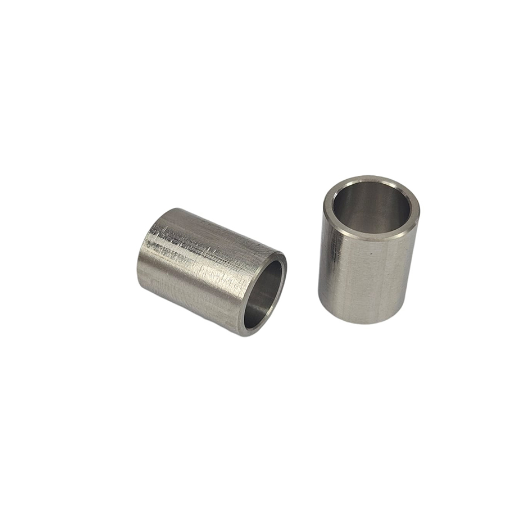
Industrial Uses
Because of the superior mechanical and chemical properties of CD4MCU, this material exhibits excellent performance when applied industrially. One of the main applications lies in the pulp and paper industry, where equipment components like pump casings, impellers, and agitators are subjected to severe erosion from abrasive slurries. Some erosion and corrosion-resisting qualities of this material, in turn, prolong the life of such components and thus are able to reduce downtime as well as maintenance costs only wrought by wear.
Aside from the pulp and paper industry, there are more applications for CD4MCU in mining operations, especially in slurry transport systems. It counters abrasive wear caused by sand, ore, and mineral particles from high-stress environments. Hence, the capability of the material to resist these hard conditions guarantees that the equipment continues to work well and the process stays sufficiently efficient under even the hardest-working conditions.
On the other hand, the chemical processing industry takes advantage of the chemical corrosion resistance exhibited by the CD4MCU. Reactor fabrication, mixers, and other equipment exposed to highly corrosive reagents such as acids, alkalis, and chlorides are within its field of application. The material ensures that equipment essential to conducting serious races against time maintains its integrity over time, heightening safety and reliability in highly aggressive chemical environments. Taken together, CD4MCU presents a flexible, heavy-duty solution for industries coping with extreme abrasion and corrosion.
Parts Made from CD4MCU Steel
The highly corrosion- and abrasion-resistant CD4MCU steel is used to make different parts. Some distinctive examples include pump impellers and casings. These bodies encounter harsh chemical solutions that contain concentrated acids and highly chlorinated environments, making them ideal applications for CD4MCU. It would provide structures with better mechanical properties that could resist increased deformation during casting or actual application, thereby enhancing the equipment’s life and decreasing maintenance costs.
Common applications of CD4MCU steel are in valve bodies and fittings destined for extreme chemical exposure. Its dual-phase microstructure, comprising austenite and ferrite, gives CD4MCU just enough toughness and corrosion resistance to allow these components to work reliably even under conditions of large temperature amplitudes or high pressure. This makes it an ideal material for use in chemical processing plants, wastewater treatment facilities, and offshore oil and gas platforms.
CD4MCU steel also finds application in the construction of agitators, pipelines, and flow systems that transport abrasive slurries or chemically aggressive substances. The resistance offered by the steel to pitting, crevice corrosion, and stress-corrosion cracking strengthens the performance of the system and minimizes the chances of failure. Mining, pharmaceutical, and food processing industries are among those that greatly benefit from the strength and efficiency offered by this alloy. Complemented with state-of-the-art machining and manufacturing capabilities, this alloy confers CD4MCU the ability to maintain very close dimensional tolerance and rugged performance, even in the most arduous situations.
Advantages in Chemical Environments
Being a very peculiar mix and balancing of material properties and resistances, the CD4MCU alloy offers superior performance even in chemical environments. Here are five key advantages supported by data:
- Great Resistance to Corrosion: The CD4MCU alloy is very resistant to the action of oxidizing and reducing agents. From the laboratory experiments, it has been seen that in concentrations of sulfuric acid up to 50% at room temperature, the corrosion rate of the alloy is less than 0.001 Inches Per Year, thus rendering it useful while handling highly aggressive chemicals.
- High Resistance to Pitting and Crevice Corrosion: Its duplex microstructure and careful balance of chromium, molybdenum, and copper contribute to excellent resistance against localized corrosion even in highly chloride-bearing environments. For example, CD4MCU alloys resist pitting and crevice corrosion far better than common stainless steels in chloride-rich solutions, remaining immune in concentrations exceeding 20,000 ppm of chlorides.
- Great Strength-to-Weight Ratio: CD4MCU has up to 30% higher tensile strength than conventional materials like stainless steel 316. This implies that thinner-walled components can be fabricated with this alloy that will cut down on the overall weights of equipment without compromising on mechanical integrity; this is important for applications on equipment used for chemical transfer and storage.
- Thermal Stability Under Extreme Conditions: It acts both mechanically and corrosion-wise from below zero temperature up to temperatures as high as 350°F (177°C), thus fitting chemical processing systems that witness thermal variations quite well.
- Extended Service Life in Harsh Environments: Withstanding uniform and localized corrosion, the grade wears away very slowly due to degradation, so less maintenance is required compared to stainless steel, thus prolonging the life of equipment. Data from both pharmaceutical and chemical industries in the field show equipment made of grade CD4MCU to experience operational life spans 2 to 3 times longer than components made of conventional stainless steels.
Through these benefits, industries operating in harsh chemical environments can improve operational efficiency, reduce replacement costs, and enhance the overall reliability of the system.
Comparison with Other Stainless Steel Alloys
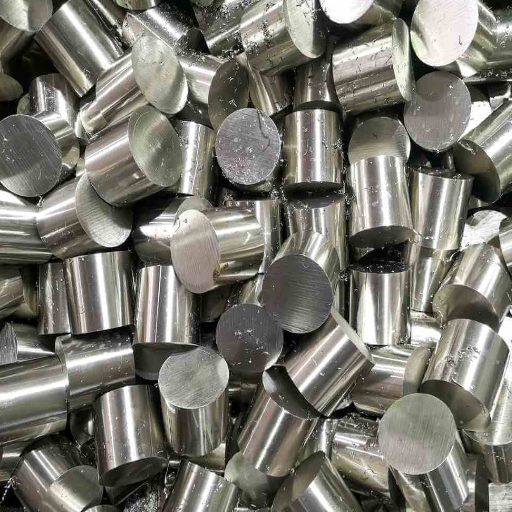
CD4MCU vs. 316 Stainless Steel
This CD4MCU provides better corrosive resistance, higher strength, and better chloride stress cracking resistance than 316 stainless steel and is therefore suited to environments that are more abrasive and corrosive.
|
Aspect |
CD4MCU |
316 Stainless Steel |
|---|---|---|
|
Category |
Duplex Steel |
Austenitic Steel |
|
Rust Resistance |
Superior |
High |
|
Durability |
Higher |
Moderate |
|
Salt Tolerance |
Better |
Moderate |
|
Yield Strength |
~550 MPa |
~230-850 MPa |
|
Uses |
Abrasive, Marine |
General, Marine |
|
Expense |
Higher |
Moderate |
|
Elements |
25% Cr, 5% Ni |
16-18% Cr, 10-14% Ni |
|
Heat Conductivity |
~17 W/m-K |
~15 W/m-K |
|
Weight Density |
~7.8 g/cm³ |
~7.9 g/cm³ |
Performance in Different Environments
Being metallurgically endowed and chemically balanced, CD4MCU is simply better-performing throughout numerous industrial environments. When compared against standard stainless steels such as 316 or duplex alloys, CD4MCU shows an enhanced resistance to corrosive effects, especially in areas with high concentrations of chlorides, acids, or alkalies. For example, corrosive action by seawater in desalination plants or the placing of brine seldom affects CD4MCU, and it may resist localized corrosion such as pitting or crevice corrosion, a condition toward which 316 stainless steel is most susceptible.
In addition, the stress corrosion cracking (SCC) characteristics of CD4MCU are excellent despite high-temperature and pressure environments. This forms a great advantage wherein acid vapors and thermal shocks are the order of the day, as in chemical reaction processes or heat exchangers. The mechanical strength of this particular alloy is further enhanced due to its dual-phase structure since it stands up to abrasion and erosion, such as in slurry transportation and mining.
Test work and trials in the field have evidenced that CD4MCU’s corrosion rate is substantially lower in aggressive environments than that of traditional materials. For instance, at 50°C in 10% sulfuric acid, the corrosion rate for CD4MCU is below 0.01 mm/year, while the figures for 316L stainless steel stand at 0.10 mm/year. These differences in the corrosion rate mean longer working life and less maintenance, and such levels of low maintenance result in considerable cost savings at long-term operations.
Combining corrosion resistance with mechanical capability and economy, CD4MCU continues to be favored as the material of choice in many critical applications, including oil and gas production, chemical processing, and marine engineering. Its consistency in performance through changing conditions means solid reliability and guaranteed uptime.
Cost Analysis of CD4MCU Steel
CD4MCU steel offers an enticing cost-performance ratio, and the commercial options it presents lend themselves well to industrial use. Ironically, its durability and resistance to corrosion provide the longest financial benefit because the maintenance requirements for repairs and replacement are considerably reduced. This decrease in maintenance minimizes downtime and disruption to operations, thereby further providing for cost savings during operation throughout the use of equipment and infrastructure.
In addition, the initial cost of CD4MCU steel is higher when compared with regular carbon steel alloys. However, the higher dollar looks on capacity because of their ability to defend well with very little maintenance spells lower overall total cost of ownership (TCO). For instance, in cracking environments such as those provided by offshore platforms or chemical factories, the material resists pitting and stress corrosion, so it can perform well without extensive maintenance costs provided for coatings or for protective treatments.
Recent industry data indicates that projects applying CD4MCU steel have managed to reduce maintenance costs by 30% to 40% when compared with less durable materials. This therefore, makes the material highly favorable for long-term installations in harsh environments. Furthermore, because the alloy is easy to machine, manufacturing costs remain under control as precision parts are fabricated with great efficiency, with minimal tool wear and scrap.
By adding to the initial capital outlay vis-a-vis a variety of extensive lifecycle benefits, CD4MCU steel remains a highly cost-efficient medium for uniquely demanding industrial environments. Its presence leads toward operational efficiency by way of enhanced financial outcomes.
Future Trends in CD4MCU Material Use
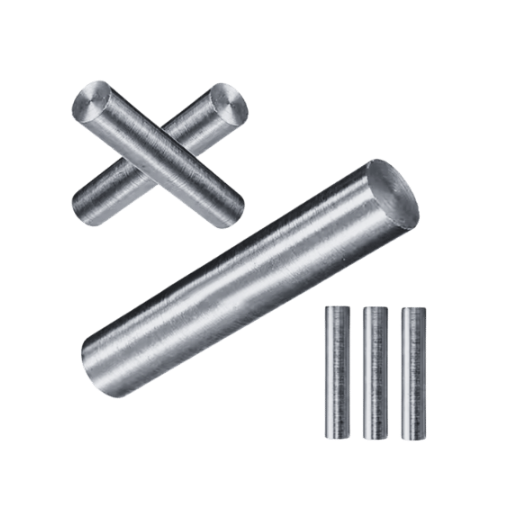
Innovations in Alloy Development
With rapid advancements taking place in the field of alloy development, the primary focus is on enhancing material properties to meet the demands of increasingly specialized applications within industrial domains. A trend is the nanotechnological approach to alloy production. By getting into the very core of material constitution at the nanoscale, researchers have been able to manipulate strength, corrosion resistance, thermal stability, etc., in an unprecedented manner. For instance, hardening and wear resistance without compromising ductility are being researched through nanostructured CDs and their variations since the aerospace and chemical industries require everlasting properties under harsh conditions.
The most exciting inventions in this field include the implementation of immense AI and machine learning in the actual processes of alloy design. Today, they facilitate engineers in dealing with enormous data sets and predicting the behavior of materials with new compositions with almost full confidence. Simulations done on AI can further reduce needless trial-and-error experiments, thus augmenting their innovative resynthesis. Development of predictive modeling also opens avenues where one can custom-tailor alloys to meet very definite real-world situations-aerosol erosion velocity, protracted exposure to caustic environments, among others-associated with improved efficiency and performance at very high levels.
Efforts are underway to push the frontiers of environmentally sustainable alloy design. There is a growing emphasis on substituting traditionally employed elements such as chromium and nickel with more environmentally friendly and abundant ones to reduce cost and environmental impact. Alloys like CD4MCU are being engineered toward maximum recyclability of the materials and compatibility with green processing technologies. Such activities align with the global sustainability goals, all the while ensuring that the alloys remain top-level when performance is required in heavy-demand sectors such as energy production and waste management.
Sustainability in Material Usage
Developing sustainable alloys is an important aspect in materials science, and advances in this respect are geared toward lessening the dependency on scarce resources and environmental impacts. Major improvements were brought about in the substitution of expensive composition elements such as cobalt and nickel by relatively cheaper elements of manganese or iron, without compromising the mechanical properties and durability of the alloy. Currently, computational models and AI-assisted simulations are paving the way for designing new alloys, thereby precisely tackling the prediction of their performance under various service conditions. With such innovations, resource scarcity was tackled along with the promotion of a life-cycle approach toward the utilization of materials so that these alloys ease recycling at the end of their working life.
Other considerations in sustainable alloy design involve focusing on green manufacturing routes. These processes include powder metallurgy and additive manufacturing; here, the reduction of waste and energy consumption is highly considered. For instance, powder-based processes utilize near-net-shape fabrication, which greatly reduces material wastage when compared to the conventional processes of casting or machining. Modern developments in additive manufacturing have furthermore presented capabilities to create complicated alloy parts with minimal utilization of resources, thus further minimizing the carbon footprint of production. Production routes to these materials will gain importance with the aerospace and automotive industries, where lightweight, high-performance, and sustainable materials are becoming more and more sought after.
Lastly, the thrust toward sustainable alloys takes in stride the various regulatory regimes and compliance standards around the world. There has been an increase in the enforcement of enactments geared toward environmental responsibility in industrial processes by governments and international bodies. Such policy initiatives entail the use of recyclable alloys that fit into the recycling infrastructure in place, essentially keeping a closed loop for material utilization. This gives the industries a lead in achieving environmental compliance and again in remaining competitive in a market where sustainability is increasingly becoming a prerequisite. This development in the form of promotion is indeed an all-encompassing approach to balancing the demands of heavy industries with the need for environmental stewardship.
Emerging Applications in Industry
Emerging industrial applications have shown immense promise in reshaping the age-old methodologies in novel methods while simultaneously harnessing green technologies. Below are the areas that are key to development and change:
- Advanced Additive Manufacturing (3D Printing): The use of 3D printing techniques has advanced from an occasional prototyping process to mainstream production on a larger scale. Industries such as the aerospace and automotive industries presently use additive manufacturing to produce lightweight yet durable parts, cutting down material waste by around 90% when compared with traditional subtractive manufacturing.
- Industrial Internet of Things (IIoT): IIoT has been implemented to transform operational performance through real-time data monitoring and predictive analytics. They reduce downtime by 20 to 30 percent, as they ensure proactive maintenance measures.
- Green Hydrogen Production: Green hydrogen is coming out to be an environment-friendly option for energy, particularly for heavy industries such as steel making and ammonia synthesis.
- Circular Economy in Materials Science: Industries look up to the circularity of materials, wherein products are designed for longer life and recyclability. Cutting-edge processes, like closed-loop recycling for e-waste, have given solutions to recover as much as 95% of valuable metals, thereby reducing environmental impacts.
What these applications display is how technological advances coupled with a sustainability focus are giving a new identity to industry, while at the same time, addressing pressing paradigms across the globe.
References
-
Reversible Single-Crystal-to-Single-Crystal Transformation in Photomagnetic Cyanido-Bridged Cd4M2 Octahedral Molecules – Published by the American Chemical Society, this paper discusses material chemistry and transformations.
-
Fluorescing substances in roots – Available on JSTOR, this source explores material properties and their applications.
-
Electronic structure, superconductivity, and magnetism in the compounds Zr, Zr, and Zr – Published in Physical Review B, this paper delves into material electronic structures and properties.
Frequently Asked Questions (FAQ)Q: What is CD4M material?
A: CD4M material is a type of stainless steel known for its high corrosion resistance and strength, making it ideal for use in various applications within the pump industry, particularly in pump casings and pumps.
Q: How does CD4M material compare to ASTM A890?
A: CD4M material is often compared to ASTM A890 due to its similar properties. Both materials are used in severe service conditions; however, CD4M offers superior corrosion resistance, particularly in environments that may involve chlorides.
Q: What are the benefits of using CD4M material in pump casings?
A: The use of CD4M material in pump casings provides enhanced durability and resistance to wear and corrosion, which extends the lifespan of the pump and reduces the need for spare parts, ultimately leading to cost savings in the pump industry.
Q: Can CD4M material be used in bronze applications?
A: While CD4M material is primarily a type of stainless steel, it may not directly replace bronze in all applications. However, in certain environments where corrosion resistance is critical, CD4M can be a suitable alternative to bronze.
Q: What is the UNS designation for CD4M material?
A: The UNS designation for CD4M material is UNS J93370. This classification helps in identifying the specific grade and properties of the material for various industrial applications.
Q: What factors should be considered when selecting CD4M material for a pump?
A: When selecting CD4M material for a pump, factors such as the fluid being pumped, operating temperatures, pressure conditions, and potential exposure to corrosive substances should be carefully considered to ensure optimal performance.
Q: Is CD4M material suitable for high-temperature applications?
A: Yes, CD4M material is suitable for high-temperature applications, provided that the temperature does not exceed the material’s limits. Its properties allow it to maintain strength and corrosion resistance even under elevated temperatures.
Q: How does the selection of CD4M material impact pump efficiency?
A: The selection of CD4M material can significantly impact pump efficiency by reducing wear and tear, minimizing corrosion, and ensuring reliable operation. This leads to lower maintenance costs and improved overall performance in the pump industry.

